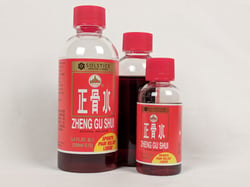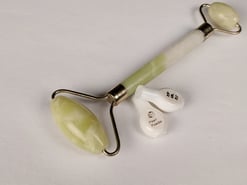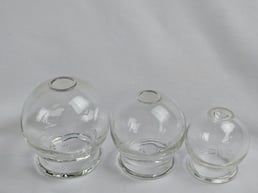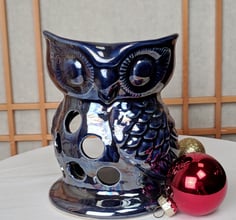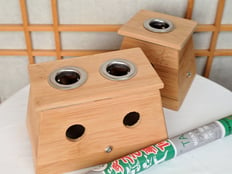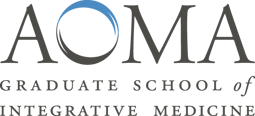By Dr. Joel Cone
Gordon Ramsey said it best when he said, “Fat is flavor.” And it’s true. Some of the best things are entirely made of fat or supremely enhanced by it. Think of truffle-buttered eggs, olive oil-rich tapenade, the Brazilian fish moqueca with its rich coconut flavor, or the ever-classic beverage: Hollandaise Sauce! But fats don’t only add a richness and flavor to our foods, they also pack in powerful metabolic regulation, for better or worse. You all know the adage you are what you eat, and a lot of who you are is fat: your brain, your stored energy reserves, your cell membranes and myelin. The type of fat you eat is important, as the regulatory cascade that it sets up can determine whether an injury resolves quickly without pain, or becomes chronic and unresolving and debilitatingly painful. Remember most pain-relieving medications, NSAIDs and corticosteroids, are drugs that influence the manufacture of eicosanoid particles. These molecules are directly pulled from fat in your cell membranes and the type of fat available can influence these molecules..png?width=288&name=Fat%20Is%20Flavor%20Images%20(2).png)
So how do we assess inflammation? We can get a thorough history and look for inflammatory indicators: smoking, sedentary lifestyles, poor food quality in a diet diary, and symptoms of pain, repetitive injury, allergies, etc. These can all be important clues to gather and assess. We can also look to blood tests. Frankly, some patients won’t trust you until they see a test in hand. You may have told them what they need, but they had to go spend the $100 on the lab tests to adopt your ideas. Such is human nature. So, what lab tests could you get? C-reactive protein and erythrocyte sedimentation rate often come to mind, though I very rarely see these elevated on blood tests, even with other signs of inflammation in the history or physical exam, so they aren’t very usefully in the general ambulatory population, in my opinion. They are still an option. I do think the Omega 3-to-Omega 6 ratio is a good test, and available through Quest Diagnostics, CPL, or other blood diagnostic labs. It gets to the dietary roots of what your patients look like internally. It looks at the roots of the inflammatory cascade and how the person is relatively set with regards to fats, and thus inflammatory processes.
.png?width=257&name=Fat%20Is%20Flavor%20Images%20(1).png) The typical Western diet contains a considerably increased ω-6 fatty acid relative to the ω-3 fatty acids (FA). Essential fatty acids (EFAs), taken in via diet or supplements, are essential components of cell membrane phospholipids, and appropriate membrane fatty acid content is pivotal for optimal membrane fluidity, receptor activity and cellular metabolism. The same FAs eventually give rise to hormone-like substances (eicosanoids) that are involved in the regulation of blood pressure and coagulation, lipid levels, immune response, allergy and asthma, tumor growth and inhibition (1), the inflammatory response to injury and infection, and they may play a role in seizure disorders, depression, and dementias such as Alzheimer's disease (2). Increased blood flow to the brain is seen with persons with improved ω-3 FA levels. Talk about an important group of molecules!
The typical Western diet contains a considerably increased ω-6 fatty acid relative to the ω-3 fatty acids (FA). Essential fatty acids (EFAs), taken in via diet or supplements, are essential components of cell membrane phospholipids, and appropriate membrane fatty acid content is pivotal for optimal membrane fluidity, receptor activity and cellular metabolism. The same FAs eventually give rise to hormone-like substances (eicosanoids) that are involved in the regulation of blood pressure and coagulation, lipid levels, immune response, allergy and asthma, tumor growth and inhibition (1), the inflammatory response to injury and infection, and they may play a role in seizure disorders, depression, and dementias such as Alzheimer's disease (2). Increased blood flow to the brain is seen with persons with improved ω-3 FA levels. Talk about an important group of molecules!
Historically, evidence is indicative that early hunter-gatherer diets had ω-6 to ω-3 fatty acids ratiosclose to 2:1. Estimates of modern ratios are now 10:1(3) to 18:1 to 50:1(2) by some estimations! And throw in the novel trans fatty acid isomers and we have a disaster on our hands (4).
Needless to say, we (...most persons anyway) need considerably more ω-3 fatty acids and considerably less ω-6 fatty acids than we currently are getting. It’s probably safe to assume the patient has a ratio greater than 2:1. High levels of ω-6 fatty acids are found in refined grains and vegetable oils, such as safflower, soy, corn, peanut, and canola oils… think fried foods, chips, crackers, cookies, chain restaurant type-foods. The ω-6 fatty acids are found in green leafy vegetables and ocean fish, such as salmon, mackerel, and sardines, or krill and other sources from plankton..png?width=270&name=Fat%20Is%20Flavor%20Images%20(3).png)
There are other ω-6 fatty acids, such as flax seed oil, that can convert to essential fatty acids like EPA and DHA. However, flax seed conversion can be as low as 2%! This is a hard-to-rely on source for EPA and DHA.
Another category of fat is arachidonic acid. Small amounts are needed, but elevated levels can be unhealthy, if not balanced with other fats. High concentrations of arachidonic acid are found in dairy, eggs, meats and shellfish.
The trouble with ω-6 fatty acids is when they are elevated, they convert to arachidonic acid, which drives up the arachidonic levels, and the unhealthy and proinflammatory effects can be quite high. Vegetarians and vegans, in some studies, have been shown to have higher levels of arachidonic acid than omnivores, due to elevated consumption of ω-6 fatty acids coupled with lower levels of ω-3 fatty acids and elevated insulin levels due to higher consumption of carbohydrates! Crazy, right? Conversion of ω-6 fatty acids to arachidonic acid is slowed by the presence of eicosapentanoic acid (in fish oils) and sesame seed oil (raw).
Although often women have elevated ω-6 fatty acids, estrogen from female physiology or estrogen-containing birth control pills can inhibit the formation and use of ω-6 and ω-3 fatty acids (lenolenic and linoleic) and sometimes women can benefit from additional types of ω-6 fats (such as found in Evening Primrose Oil, Black Currant Seed Oil, or Borage Oil) along with EPA (fish or krill oil). Severe cramping around the menstrual cycle can hint at this being an issue(5).
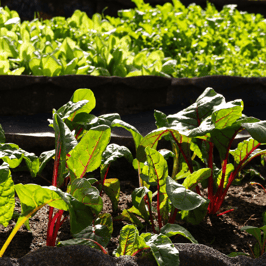
All of this sound confusing? Well, it’s not as confusing as I’m probably making it. A simple rule is to try to balance your fat categories. Here are some simple ideas that can help:
- Increase fruit and vegetable consumption! Green and leafy vegetables are low in omega-6 fats and arachidonic acid and often contain omega-3 fats, too
- Reduce your refined carbohydrates, total carbohydrates, and sugar, as increased insulin drives the conversion of ω-6 fatty acids to arachidonic acid.
- Reduce take out, restaurant foods, and packaged foods (as these often contain higher levels of ω-6 fatty acids). Look at the oils used in potato chips, crackers, fried foods, shelf stable packaged foods… they all have ω-6 fatty acids in common.
- Consider adding more salmon, tuna, mackerel, sardines, and herring to your diet, and/or add around 1,200mg or more Eicosapentanoic Acid (EPA) to your diet in a pill form (I like Nordic Naturals brand fish oils).
- Low protein diets can drive up arachidonic acid levels (as protein is typically replaced with carbohydrates). Take in adequate protein for your body mass. General recommendations are 0.8gm/kg and up to 1.6 gm/kg body weight, with 1gm/kg bodyweight being a good recommendation generally. Athletes and very active persons need on the higher end of this range (4).
- Eliminate or considerably reduce vegetables oils, and consider cooking with either coconut oil or olive oil as your first choice.
- Arachidonic acid conversion to pro-inflammatory end products is inhibited by ginger,turmeric, bioflavinoids and boswellia, FYI.
I always try to consider what will make the biggest impact on my patient's physiology with the least cost or annoyance. Fatty acid ratios and consumption patterns are an approach that has very broad effects on a person’s physiology and can be a good place to start when inflammation may be involved.
Work Cited:
- Omega-3 fatty acids, membrane remodeling and cancer prevention. Natividad R. Fuentes et al. Mol Aspects Med. 2018 Dec.
- Omega Fatty Acids – Proper Ratio is Key. BrainMD Life. June 13, 2017.
- Origins and evolution of the Western diet: health implications for the 21st century. Loren Cordain, S Boyd Eaton, Anthony Sebastian, Neil Mann, Staffan Lindeberg, Bruce A Watkins, James H O’Keefe, and Janette Brand-Miller Am J Clin Nutr 2005;81:341–54. 2005 American Society for Clinical Nutrition
- The Big Book of Health and Fitness. Phil Maffetone. 2012 Skyhorse Publishing.
- Clinical Nutrition for Pain, Inflammation and Tissue Healing. David Seaman,1998 NutrAnalysis, Inc.

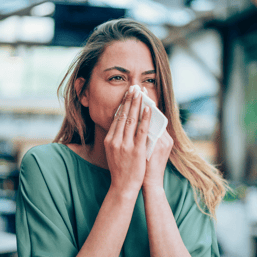
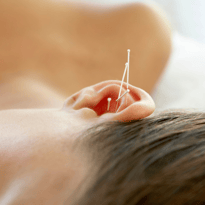 nose
nose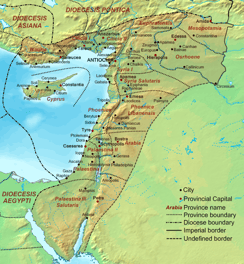
 AOMA along with the world of Acupuncture as a whole has moved away from the usage of the word. The medicine taught and practiced at AOMA comes not from the falsely depicted “backwards nations” of colonial fiction, but from the rich, vibrant cultures of Asia which were just as diverse and advanced (more so at times) as those of Europe. By shedding this burdened word from our lexicon we seek not to abandon the roots of Acupuncture, but rather to continue integrating this medicine into American society.
AOMA along with the world of Acupuncture as a whole has moved away from the usage of the word. The medicine taught and practiced at AOMA comes not from the falsely depicted “backwards nations” of colonial fiction, but from the rich, vibrant cultures of Asia which were just as diverse and advanced (more so at times) as those of Europe. By shedding this burdened word from our lexicon we seek not to abandon the roots of Acupuncture, but rather to continue integrating this medicine into American society.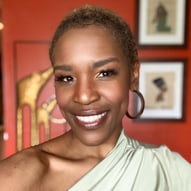 Joyce Carol Oates said, “The great enemy of writing is interruption.” I have lived this truth for the past eight years trying to complete consecutive degrees while raising a large family. It has not been more apparent than in these past four months trying to complete my portfolio, and the past two weeks is a perfect example. I thought my reflection would be the easiest task of all the portfolio items to complete, however constant and frequent interruptions have disrupted my thinking to the point that some days I could not write more than one or two sentences in one sitting. I hope that in sharing my thoughts, I am able to convey the joy, enlightenment, frustrations, limits, and love that was all equally part of my overall experience in this program.
Joyce Carol Oates said, “The great enemy of writing is interruption.” I have lived this truth for the past eight years trying to complete consecutive degrees while raising a large family. It has not been more apparent than in these past four months trying to complete my portfolio, and the past two weeks is a perfect example. I thought my reflection would be the easiest task of all the portfolio items to complete, however constant and frequent interruptions have disrupted my thinking to the point that some days I could not write more than one or two sentences in one sitting. I hope that in sharing my thoughts, I am able to convey the joy, enlightenment, frustrations, limits, and love that was all equally part of my overall experience in this program. 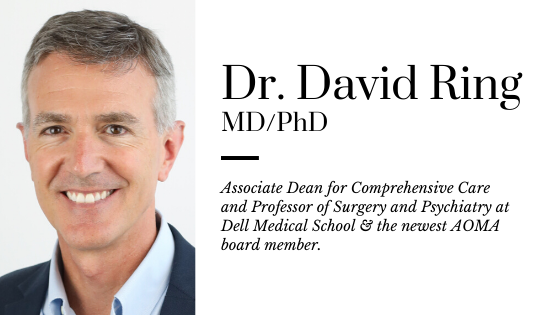
 ose. I moved back to Austin and began work at a wonderful organization, The Marbridge Foundation, which is a residential care facility for adults with intellectual disabilities. I worked there full-time before starting AOMA master’s program. I stayed on as a part-time employee all throughout my time at AOMA, and left Marbridge all together about a year ago. It was a wonderful place to work and my experiences there instilled in me patience, communication skills, and stress management skills for myself as well as for patients.
ose. I moved back to Austin and began work at a wonderful organization, The Marbridge Foundation, which is a residential care facility for adults with intellectual disabilities. I worked there full-time before starting AOMA master’s program. I stayed on as a part-time employee all throughout my time at AOMA, and left Marbridge all together about a year ago. It was a wonderful place to work and my experiences there instilled in me patience, communication skills, and stress management skills for myself as well as for patients.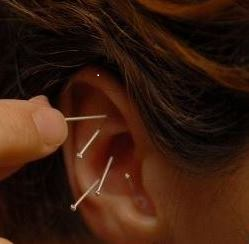 tobacco, methamphetamine, and cocaine abuse makes it a promising adjunct to medical and behavioral treatment methods in a very challenging patient population. Additionally, the NADA protocol has been used for stress management, including post-traumatic stress, treating addicted pregnant women, sleep disorders, and anxiety. It has been used in refugee camps, post-hurricane settings, prisons, hospitals, rehabilitation treatment centers, as well as outpatient clinics, predominantly in a group treatment context.
tobacco, methamphetamine, and cocaine abuse makes it a promising adjunct to medical and behavioral treatment methods in a very challenging patient population. Additionally, the NADA protocol has been used for stress management, including post-traumatic stress, treating addicted pregnant women, sleep disorders, and anxiety. It has been used in refugee camps, post-hurricane settings, prisons, hospitals, rehabilitation treatment centers, as well as outpatient clinics, predominantly in a group treatment context..jpg?width=1973&name=Acupuncture%20(5).jpg)
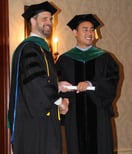 of schooling required. People are often shocked to learn that a Master Degree is required before they may sit for the National Boards exams. What’s more, this is not your standard two year Master’s. AOMA’s program is 203.5 quarter credits (equal to 135.6 semester credits), typically takes four and a half years, and involves a total of 2970 instructional hours. Of those, 161.5 of the credits, or 1962 hours are Didactic and 42 credits, 1008 hours, are clinical.
of schooling required. People are often shocked to learn that a Master Degree is required before they may sit for the National Boards exams. What’s more, this is not your standard two year Master’s. AOMA’s program is 203.5 quarter credits (equal to 135.6 semester credits), typically takes four and a half years, and involves a total of 2970 instructional hours. Of those, 161.5 of the credits, or 1962 hours are Didactic and 42 credits, 1008 hours, are clinical..jpg?width=136&name=Classroom_Blood%20Pressure%20(1).jpg) working alongside other healthcare providers with the best interest of the patient in mind. To this end AOMA’s program covers a wide range of biomedical topics including Medical Biochemistry, Pathophysiology, and Biomedical Pharmacology among others.
working alongside other healthcare providers with the best interest of the patient in mind. To this end AOMA’s program covers a wide range of biomedical topics including Medical Biochemistry, Pathophysiology, and Biomedical Pharmacology among others.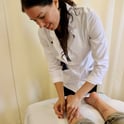 acupuncture programs require a lot of clinical and hands on laboratory hours. As mentioned earlier, 1008 of AOMA’s 2970 instructional hours are clinical, this translates to 34%, one third of the program. This process begins with Clinic Theater I in which students are exposed to the diagnostic methods of TCM including the techniques and application of acupuncture and Chinese herbal medicine by observing professional treatments performed by a member of the AOMA faculty. This culminates in a full clinical internship, in which the student, as a supervised intern, performs the intake, diagnosis, and treatment of patients.
acupuncture programs require a lot of clinical and hands on laboratory hours. As mentioned earlier, 1008 of AOMA’s 2970 instructional hours are clinical, this translates to 34%, one third of the program. This process begins with Clinic Theater I in which students are exposed to the diagnostic methods of TCM including the techniques and application of acupuncture and Chinese herbal medicine by observing professional treatments performed by a member of the AOMA faculty. This culminates in a full clinical internship, in which the student, as a supervised intern, performs the intake, diagnosis, and treatment of patients.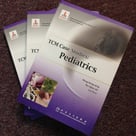 academic backgrounds, and published research. At AOMA there are 37 faculty members, including 29 Licensed Acupuncturists, 7 Medical Doctors, 2 Ph.D.’s and 6 faculty members who hold both an MD and a Ph.D. AOMA Graduate School is also the home of the only Chinese herbal pharmacologist Ph.D. in the United States. About two thirds of our faculty bring to the table at least a decade of tenure and many years of training and practicing TCM in China.
academic backgrounds, and published research. At AOMA there are 37 faculty members, including 29 Licensed Acupuncturists, 7 Medical Doctors, 2 Ph.D.’s and 6 faculty members who hold both an MD and a Ph.D. AOMA Graduate School is also the home of the only Chinese herbal pharmacologist Ph.D. in the United States. About two thirds of our faculty bring to the table at least a decade of tenure and many years of training and practicing TCM in China.